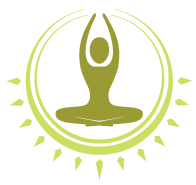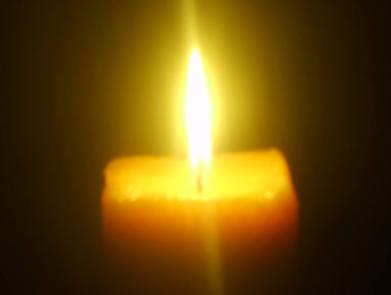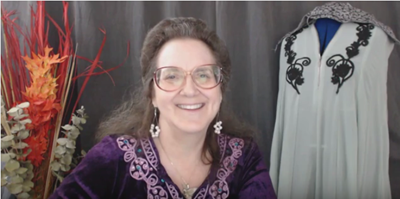 Just what is meditation anyway? So many times I have heard “I don’t have time to meditate.” Or “Well, I know I can’t do it right, so I just don’t do it.” My favorite is the “I just can’t get my legs to twist in that lotus position thing and sit on the floor and say aw-ooohm” while they’re rolling their eyes back in their head.
Just what is meditation anyway? So many times I have heard “I don’t have time to meditate.” Or “Well, I know I can’t do it right, so I just don’t do it.” My favorite is the “I just can’t get my legs to twist in that lotus position thing and sit on the floor and say aw-ooohm” while they’re rolling their eyes back in their head.
Well, meditation means different things to different people. Somewhere along the way a misconception developed in the western mind-set that the only meditation was transcendental meditation. Now, transcendental meditation is a type of meditation, but it isn’t the end-all and be-all of the subject. First, let’s look at what meditation really is. The American Heritage Dictionary defines it as:
Meditation:
1. To reflect on; contemplate.
2. To plan in the mind; intend: meditated a visit to her daughter; and/or,
1. Buddhism & Hinduism To train, calm, or empty the mind, often by achieving an altered state, as by focusing on a single object; b. to engage in devotional contemplation, especially prayer.
2. To think or reflect, especially in a calm and deliberate manner.
Now, I don’t see anything about sitting on the floor, chanting or twirling in circles (the Sufi Whirling Dervishes meditate through dance) in that definition. Do you? Some take meditation to the ultimate of extent. Many claim to achieve out of body experiences while meditating, while others say “nothing happened, I just sat there.” Results can range from melting the snow around you (a very advanced meditation preserving internal body heat performed by some monks) to just relaxing a little. It takes years of study and effort to learn the discipline and strength of mind to melt the snow around you with your body heat. It takes seconds to learn to do simple meditation. Leave the snow melting for the monks! Snow will be around in the future if you want to give that a try later! Most of us don’t have the opportunity to be able to spend our lives in meditation, contemplation and service to our God. Most of us have jobs, families, kids, aging parents, significant others and all that jazz. Heck, half the time we’re giving up sleep to get everything done already!!! Monks are truly spiritual striving beings whose entire focus is meditation, learning the inner self, caring for and passing on the teachings of their order, etc. Those capable of such feats are amazing individuals who have dedicated their lives to spiritual pursuits. Why do you think you who is living in the modern age with iPhones, commutes, security alerts and a meeting with the kid’s teacher tomorrow at 2 – should have to melt snow in meditation??
 Us, well, we’re modern westerners. We’re so bombarded with information and all the things that we’re supposed to do, the things we tend to sacrifice first are the things we should do for ourselves. There’s a reason why medical and spiritual professionals recommend meditation to their patients or seekers. Simple as simple can be, meditation works. Meditation isn’t that difficult, requires no actual specific form (just do a search on meditation and see what it gets you – there’s tapes, and CD’s and books and classes and forms and hand-outs and mats and candles and incense and all sorts of stuff!) and is a practice one should do for oneself. To think deliberately…meditate.
Us, well, we’re modern westerners. We’re so bombarded with information and all the things that we’re supposed to do, the things we tend to sacrifice first are the things we should do for ourselves. There’s a reason why medical and spiritual professionals recommend meditation to their patients or seekers. Simple as simple can be, meditation works. Meditation isn’t that difficult, requires no actual specific form (just do a search on meditation and see what it gets you – there’s tapes, and CD’s and books and classes and forms and hand-outs and mats and candles and incense and all sorts of stuff!) and is a practice one should do for oneself. To think deliberately…meditate.
Maybe it’s the title that scares you. Are you thinking you have to go out and get a woven reed mat, silk leotard and a bandanna? Maybe a set of tapes about how to meditate would help you? A trip to the local New Age bookstore or an internet search will show you a multitude of styles and types of meditation. Each making claims about how their way is the best.
Let’s take a closer look at the second definition of the word. I think this is where many people scare themselves out of a good thing. In regard to the religions of Buddhism & Hinduism Meditation is a way to train, calm, or empty the mind, often by achieving an altered state, as by focusing on a single object. Okay, great if you’re a monk and have days to contemplate a flower – not that that level of contemplation isn’t important in its proper place. To know that level of contemplation, to be able to still the mind and emotion at will, are definitely admirable traits indeed. These may not be realistic expectations for the novice who’s hesitant to start in our modern western culture.
It’s more the second half of this definition that us westerners could take to heart: b. to engage in devotional contemplation, especially prayer. Now, we could even do away with the prayer and devotional adjectives (I know of several Atheists who meditate regularly). That leaves us with the phrase “to engage in contemplation.” Now that doesn’t sound near as scary does it? When you “engage in contemplation” it’s another way of saying you are “going within” or looking inside yourself.
There are meditations that focus on dancing, chanting, drumming, singing, or being completely still. Each and every one of them is a viable and important form. If it works for them it works. I’m not trying to teach a new mode of meditation to those who already engage in the practice on a regular basis because you have already learned how to make that connection to the inner self. This is for the average working Mom or Dad who hardly has time to think, much less meditate!! Let me present a few ways to begin that may help you get started.
1. Relax!! That’s the whole point!! If you’re comfortable laying flat on the bed, do so! If it is easier for you to sit in an arm chair and rest your arms on the chair, then by all means go right ahead and do so! The point is to get into a comfortable position.
2. Relax!! Once you’ve found a comfortable position, just close your eyes. Some say that you should let your mind wander, allowing it float through the myriad thoughts in your head. Others say you should pick a specific idea, thought or motive for the meditation. Again, this is a situation of whatever works. Personally, I meditate both ways depending on what’s going on, how much time I have, and what is happening in my life at the time.
3. Relax!! Letting your mind wander is a good thing. We’re so conditioned in our modern “produce” society, that spending time letting your thoughts just wander seems like a waste of time. How can connecting with yourself be a waste of time?
Here’s some descriptions of how some people that I know “meditate”:
a. One friend just goes for a walk in the woods, walking on an established trail. She just lets her mind wander as her body sets into the rhythm of “left foot/right foot.” She says rather than making her less aware of her surroundings, she is more aware and finds greater joy in the tiny prisms of color that string along the spider webs as the sun glints off of them. Rather than becoming tired from walking, she returns refreshed and energized.
b. Another does what she calls “letting Calgon take her away” from that company’s old advertising slogan. The only time she really gets time to herself is when the kids are in bed, the old man is snoozing on the couch, and the house is relatively quiet. She sneaks into the master bath, as she says “I pour half a box of that stuff in there” and then she slips into the hot bath. She swears that the relaxation of the bath itself gets her in the “right mood” to meditation. She states that she usually lets her mind free-float for 5-10 minutes, and then she picks a thought or concept to focus on for the remainder of her time. She is convinced that the act of being immersed in water helps her meditate better, achieve a state of inner focus faster, and helps her keep her center.
c. Dancing has long been considered a form of meditation. Ancient cultures and those of today use dance and movement as a form of meditation. That’s what “spiritual dancing” is all about. Many of the cultures of the Native American hold dancing as a sacred act. Temple dancers in the ancient world danced to bring them closer to their Gods. One of the most well known of these are the whirling dervishes of the Sufi sect who use dancing in circles as a way to commune and meditate.
d. Daily Prayer Meditation. Whatever your belief system is, spending some time in purposeful thought within the realms of that system is meditation. For the Christian it may be reading the Bible, for the Muslim reading the Koran, for those of the Jewish faith, the Torah, there are so many that could be read in contemplative thought. That’s meditation. Contemplative Thought!
e. Focused Meditation: For those who want to choose a specific focus for the day, there’s lots of way to do it. You could take all the things you want to devote mental effort towards, write them on slips of paper and put them in a jar. Each morning take a one of the slips of paper out of the jar and put it in
your pocket. Whenever you have a free moment that day, focus your thought patterns on the issue or idea on your piece of paper. Another focused meditation would be choosing a tarot card, one of the I Ching, the properties of a specific type of crystal, a rune stone, etc. and focus on the meaning of that messenger and the message it could be bringing to you at this time.
f. The “Chair Zone.” This sometimes takes a little practice, but it sure works for those who have been able to master it. (It doesn’t take long to master it from what I understand.) And, I bet you’ve already done it. Have you ever sat in front of the TV and got so lost in your own thoughts you didn’t know what happened on the show on TV? Well, you were spending some contemplative meditative thought on something, that’s for sure! You were so into whatever it was you were thinking about the rest of the world had just melted away!
So you see, meditation can be a very high practice that can take years to master for those who pursue the transcendental state. Those who are capable of achieving it are very special seekers indeed. On the other hand, meditation can be a quick uplifting gift we give ourselves for those of us who are not trying to achieve a transcendental state.
It has been our experience that meditative practices do help. They help to bring the person to a better understanding on their inner self, their true wants and desires, and the inner core of their being. Through knowing what you truly want, you have already begun the path of creating the future you want for yourself.
Meditation is a very personal activity and you need to find what works for you. We’ve provided some suggestions on how to give it a try or get started, but there are a lot of books and websites out there for you that have all sorts of information material and instruction on how to meditate. Local centers in your area may hold classes on meditation.
Allow meditation into your life to help energize your spirit, bring your physical self in line with your spiritual self, and allow you to move in time with your inner self, your own personal drummer.

